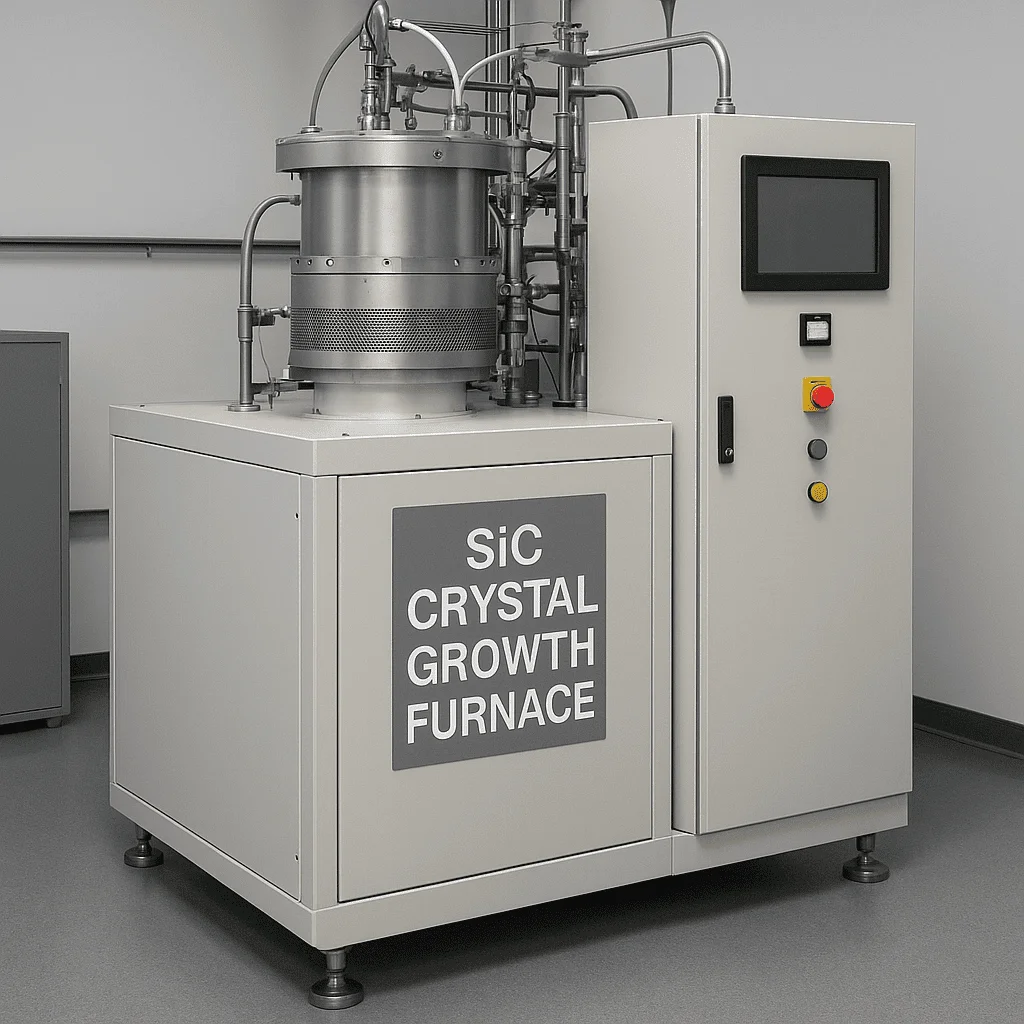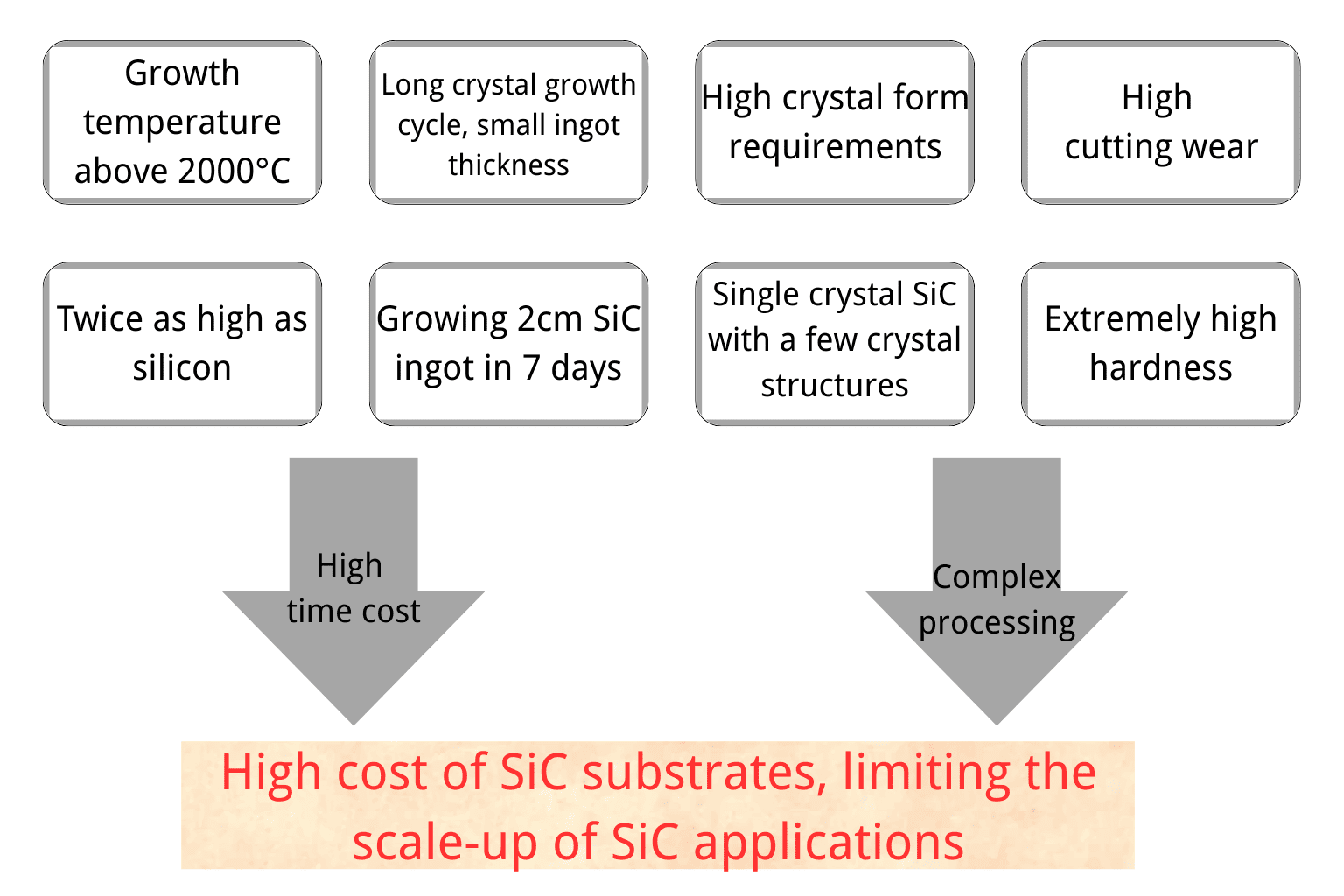QR Code

About Us
Products
Contact Us

Phone

Fax
+86-579-87223657

E-mail

Address
Wangda Road, Ziyang Street, Wuyi County, Jinhua City, Zhejiang Province, China
The crystal growth furnace is the core equipment for growing silicon carbide crystals, sharing similarities with traditional silicon crystal growth furnaces. The furnace structure is not overly complex, primarily consisting of the furnace body, heating system, coil drive mechanism, vacuum acquisition and measurement system, gas supply system, cooling system, and control system. The thermal field and process conditions within the furnace determine critical parameters such as the quality, size, and electrical conductivity of the silicon carbide crystals.

On one hand, the temperature during silicon carbide crystal growth is extremely high and cannot be monitored in real-time, so the primary challenges lie in the process itself. The main challenges are as follows:
(1) Difficulty in thermal field control: Monitoring in a sealed high-temperature chamber is challenging and uncontrollable. Unlike traditional silicon-based solution-based direct-pull crystal growth equipment, which has high automation levels and allows for observable and adjustable growth processes, silicon carbide crystals grow in a sealed high-temperature environment above 2,000°C, and precise temperature control is required during production, making temperature control highly challenging;
(2) Crystal structure control challenges: The growth process is prone to defects such as microtubes, polymorphic inclusions, and dislocations, which interact and evolve with one another.
Microtubes (MP) are through-type defects ranging in size from several micrometers to tens of micrometers, and are considered killer defects for devices; Silicon carbide single crystals include over 200 different crystal structures, but only a few crystal structures (4H type) are suitable as semiconductor materials for production. Crystal structure transformations during growth can lead to polymorphic impurity defects, so precise control of silicon-to-carbon ratio, growth temperature gradient, crystal growth rate, and gas flow/pressure parameters is required;
Additionally, temperature gradients in the thermal field during silicon carbide single crystal growth result in primary internal stresses and induced defects such as dislocations (basal plane dislocations BPD, twist dislocations TSD, and edge dislocations TED), which affect the quality and performance of subsequent epitaxial layers and devices.
(3) Difficulty in doping control: External impurities must be strictly controlled to obtain directionally doped conductive crystals;
(4) Slow growth rate: The crystal growth rate of silicon carbide is extremely slow. While traditional silicon materials can form a crystal rod in just 3 days, silicon carbide crystal rods require 7 days, resulting in inherently lower production efficiency and severely limited output.
On the other hand, the parameters for silicon carbide epitaxial growth are extremely stringent, including equipment Sealing performance, reaction chamber pressure stability, precise control of gas introduction time, accurate gas ratio, and strict management of deposition temperature. Especially as device voltage ratings increase, the difficulty of controlling core epitaxial wafer parameters significantly increases. Additionally, as the thickness of the epitaxial layer increases, ensuring uniform resistivity while maintaining thickness and reducing defect density has become another major challenge.
In the electrical control system, high-precision integration of sensors and actuators is required to ensure that all parameters are accurately and stably regulated. Optimization of control algorithms is also critical, as they must be able to adjust control strategies in real-time based on feedback signals to adapt to various changes during the silicon carbide epitaxial growth process.
Key challenges in SiC substrate manufacturing:

From the supply side, for SiC crystal growth furnaces, due to factors such as lengthy equipment certification cycles, high costs associated with switching suppliers, and stability risks, domestic suppliers have yet to supply equipment to international mainstream SiC manufacturers. Among them, international leading silicon carbide manufacturers such as Wolfspeed, Coherent, and Rohm primarily use crystal growth equipment developed and produced in-house, while other international mainstream silicon carbide substrate manufacturers primarily purchase crystal growth equipment from German PVA TePla and Japanese Nissin Kikai Co., Ltd.



+86-579-87223657


Wangda Road, Ziyang Street, Wuyi County, Jinhua City, Zhejiang Province, China
Copyright © 2024 VeTek Semiconductor Technology Co., Ltd. All Rights Reserved.
Links | Sitemap | RSS | XML | Privacy Policy |
